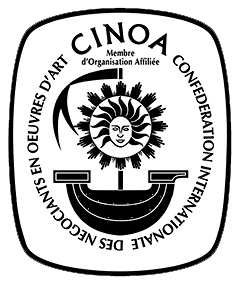Three roundels
Global shipping available
- Origin
- Italy, Tuscany
- Period
- 13th century
- Material
- partly gilded copper, champlevé enamel
- Diameter
- 3 cm
- Literature
J. Chapuis, ‘Romanesque Art’ in: Heilbrunn Timeline of Art History, New York: The Metropolitan Museum of Art.
M. Gauthier, Émaux du moyen âge occidental, Fribourg 1972, p. 27, 28.
Questions about this object?
Please use one of the contact options below:
Description
A set of three Italian Romanesque gilded copper and camplevé roundels, decorated with three male heads. The medallions were part of a belt. The heads are made of red, blue and black enamel, and gilded copper. Two of the men look to the right, one to the left. Three holes were made in each medallion so that they could be attached to the belt. The medallions are decorated with enamel champlevé, an enamelling technique that was often used in Romanesque art. The image was carved into the copperplate, and the resulting recesses filled with liquid enamel. This created an opaque decoration in which the copperplate is part of the image.
The main force behind the development of Romanesque art and architecture was the expansion of monastic life in the eleventh and twelfth centuries. New orders were founded and monasteries established and decorated. Most Romanesque art is therefore closely linked to Christianity and depicts a religious theme. This makes it plausible that these three male heads depict apostles or saints, in the typical Romanesque style with bright colors and simple figures.







